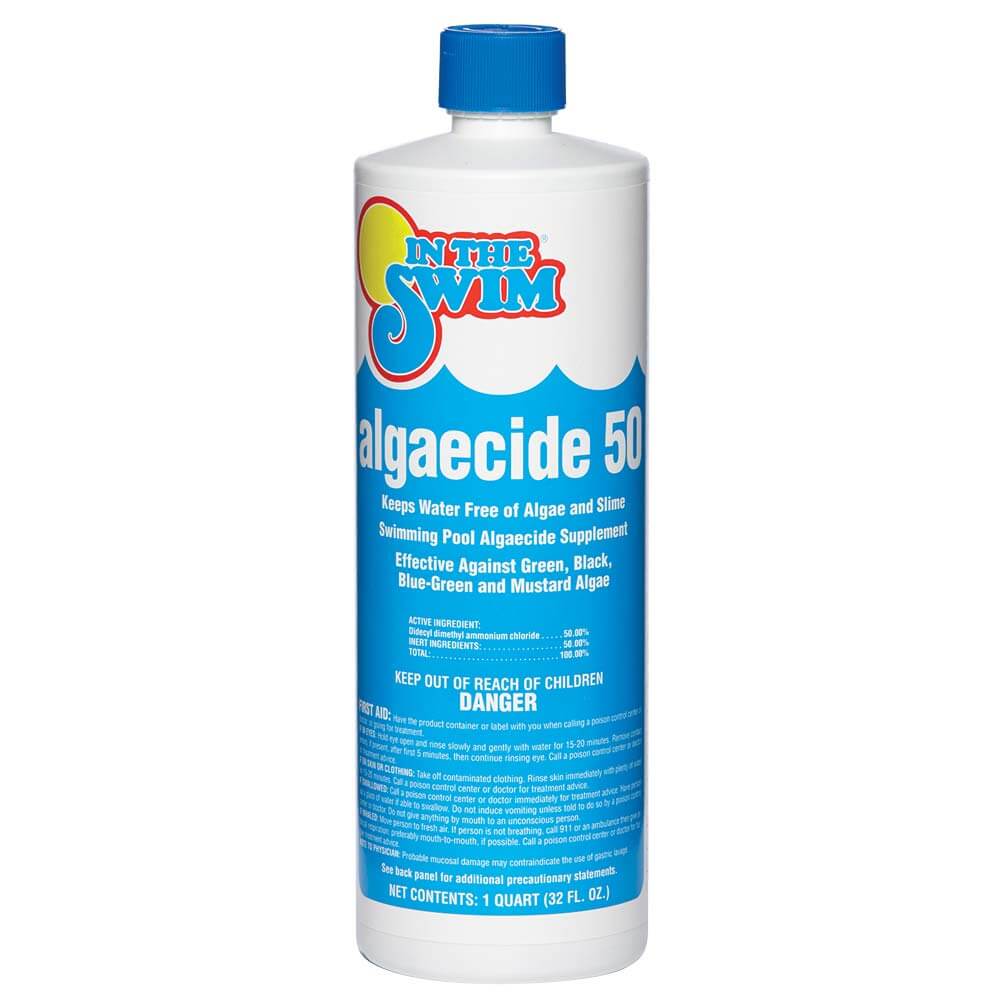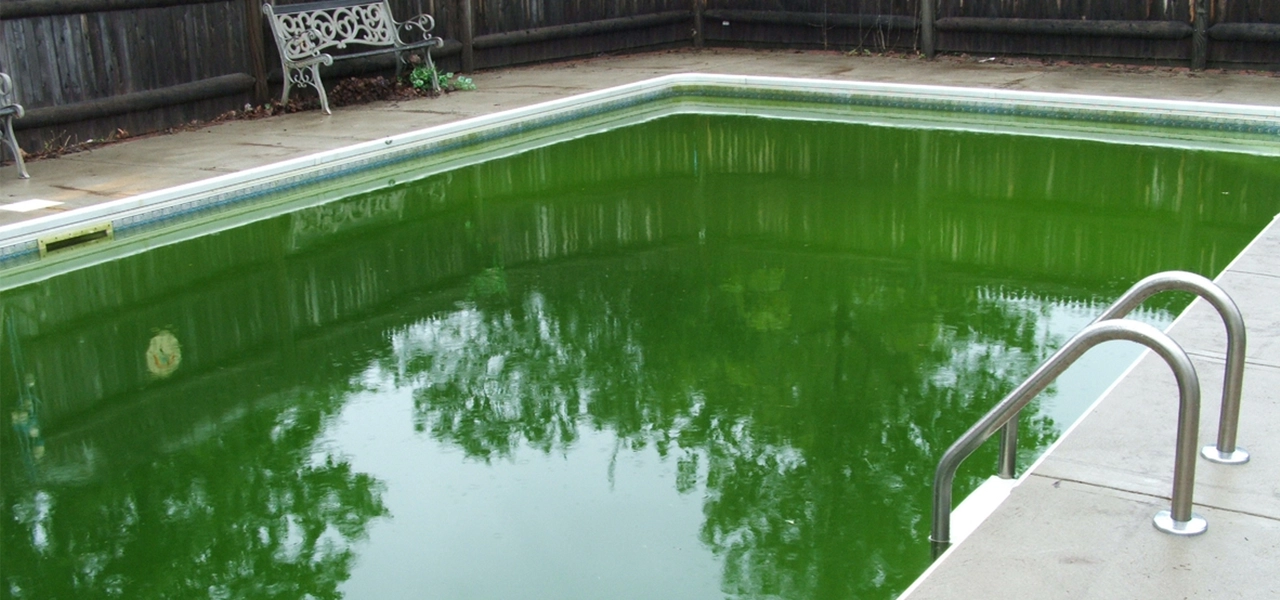Since the advent of swimming pools, there has been algae, for which chemists like myself have been called upon to produce antidotes.
Modern pool algae treatments can be classified into several distinct groups.
- Quaternary Ammonium Algaecides (Quats)
- Polymer Algaecides (Poly-Quats)
- Metallic Algaecides (Copper & Silver)
Quat Algaecides
Some pool owners know this type as Algaecide “50”, because Quat Algaecides are typically 50% Quaternary compounds (C12-16). Quats are biocides that control algae in swimming pools to minimize undesired biological growth.
Quat algaecides are also known for their distinctive odor, and foaming that can result from overuse. You can use a Quat algaecide for controlling algae during the summer or as a winter algaecide. Not overly effective in killing large algae blooms, it’s strength is in control of pool algae.
Algaecide 50 has quick contact times against bacteria, enveloped viruses, pathogenic fungi and of course, pool blue green algae strains. It can aid chlorine in attacking algae cells by weakening the outer membrane.
Polymer Algaecides
Polymers are long chains of connected carbon, and is a short way of saying “Poly Molecule”. Polymers in algaecides are drawn to the negative charge of the algae molecule. Once attached, they begin to invade the organism, and disrupt the cell processes, causing the cell to die.
These are typically labeled as “60” in the pool algaecide business. This is because the formulation is typically 60% concentration of polymers, which may actually contain quats. Indeed, many Polymer algaecides are really Poly-Quat compounds.
Algaecide 60 Plus is well respected as effective in controlling most forms of blue-green algae and yellow algae. Non-foaming and non-staining formula has greater resistance to high chlorine levels.
Metallic Algaecides
Copper and Silver have been known to have algaestatic properties for thousands of years. In the past few hundred, colloidal mixtures of microscopic metals have found hundreds of uses for bacteria and microorganism removal.
Considered antimicrobials by the EPA, copper and silver compounds are best when chelated, to keep the metals stable within the solution, and reduce the possibility of staining to pool plaster, tile grout and plastic steps in a pool.
Copper & Silver algaecides are quite effective at killing most forms of green and blue-green algae by disrupting their reproductive capacity, and have also been proven effective with strains of black algae in swimming pools.
Super Algaecide is now In The Swim Black Algaecide
Tips for using Pool Algaecide
To Increase the efficacy of pool algaecide:
- Don’t add pool shock and algaecide at the same time
- Balance your pool chemistry before adding algaecide
- Clean the pool thoroughly before adding algaecide






I have a 10,000 gls in ground (cement) pool at home in Puerto Rico. Normally the temperature are arround the 90s. Very sunny. Which one of the algaecide (50, 60, or metalic super algaecide) is the best in case. Thanksyou. jose 787-478-5003.
Hi, my go to all purpose algaecide is the 60, it’s much stronger than the 50, copper is also very effective, but you can’t overuse it, or you can get staining on the pool surfaces. But it can be used safely by following label directions.
[…] the many types of algaecides, you can check out two great posts Dr. Pool wrote on the topic: here and also […]
[…] formula, which may not work as well in all situations. For more info, Dr. Pool did an entire post on Algaecides last […]